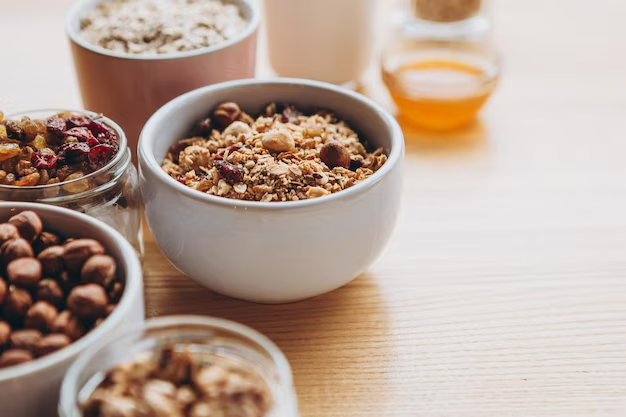Choosing the Right Cereal for Diabetics: A Guide to Healthy Breakfast Choices
Navigating breakfast options can be a daunting task for people with diabetes. With numerous cereals touting health benefits, it's crucial to select a cereal that helps maintain blood sugar levels. So, what is the best cereal for diabetics? The answer hinges on understanding nutritional content and personal dietary needs.
Key Considerations for Diabetic-Friendly Cereals
When selecting a cereal, prioritize those with low glycemic index (GI), as they have a minimal impact on blood sugar levels. Whole grains are a better choice than refined grains because they digest slower and contain more nutrients. Furthermore, look for cereals high in fiber and low in added sugars.
Recommended Ingredients:
- Whole oats or bran: High in soluble fiber, they help manage blood sugar and offer a hearty start to your day.
- Nuts and seeds: Almonds, chia seeds, or flaxseed can add protein and healthy fats, keeping you full longer.
- Berries: Adding fresh or frozen berries can enhance flavor and provide essential antioxidants.
Top Cereal Choices for Diabetes Management
Oatmeal: A breakfast staple, oatmeal is packed with fiber and has a low GI. Opt for steel-cut or rolled oats without added sugars. Customize it with nuts, seeds, and a sprinkle of cinnamon for flavor.
Bran Flakes: These cereals are made from whole grain wheat with a healthy dose of fiber. Pair them with almond milk and a handful of fresh berries.
Muesli: This Swiss invention often contains raw oats, nuts, seeds, and dried fruit. Look for brands without added sugar, or make your own mix at home.
Whole Grain Cereals: Select cereals labeled “whole grain” as their first ingredient. Examples include shredded wheat or puffed grains, ideally with less than 5 grams of sugar per serving.
DIY Cereal Mix: Combine quinoa flakes, chia seeds, and a scoop of your favorite nuts. Add fresh fruit to naturally increase sweetness.
The Role of Financial and Educational Support
Managing diabetes often goes beyond diet, involving healthcare costs and lifestyle adjustments. For many, understanding the resources available for financial and educational support can alleviate some of the burdens. Whether you're seeking ways to cover medical expenses or looking to educate yourself further about diabetes management, these resources can be invaluable.
Resources for Additional Support
💸 Financial Assistance Programs
- Supplemental Nutrition Assistance Program (SNAP): Helps purchase food items, ensuring access to healthy options.
- Medicare and Medicaid Services: Provide coverage for diabetes management supplies and education.
- The Diabetes Foundation: Offers prescription assistance and supplies.
📚 Educational Opportunities
- CDC’s Diabetes Education and Support Services: Provides accredited programming to understand diabetes better.
- American Diabetes Association: Offers a variety of resources and support groups for individuals living with diabetes.
💳 Credit Solutions
- Health Savings Account (HSA): Use pre-tax dollars for medical expenses, including diabetes supplies.
- Flexible Spending Accounts (FSA): Similar to HSA, this can be used to cover out-of-pocket medical costs.
Choosing the right cereal for diabetes management doesn’t need to be difficult. By focusing on whole grains, high fiber, and low GI options, you set a foundation for balanced blood sugar levels and whole-body wellness. Combine these dietary choices with the available financial and educational resources to enjoy a comprehensive approach to living healthily with diabetes.
